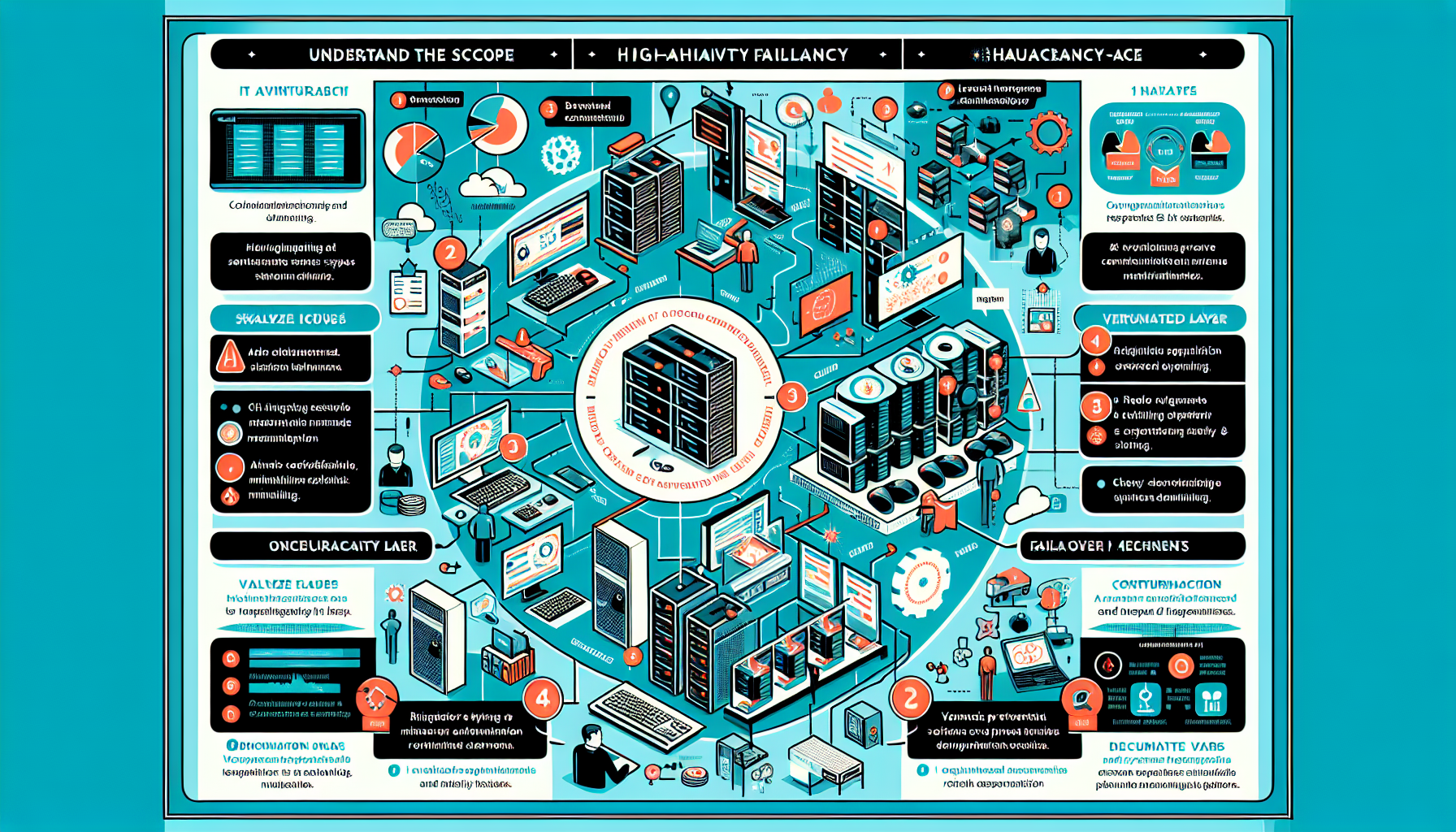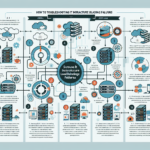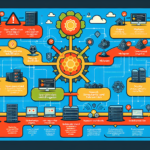Troubleshooting high-availability (HA) failures in IT infrastructure requires a systematic approach to identify and resolve the root causes, as HA setups are critical to minimizing downtime and ensuring business continuity. Below is a detailed troubleshooting guide tailored to your role as an IT manager overseeing datacenters, storage, backup, servers, virtualization, Windows, Linux, Kubernetes, AI, and other IT infrastructure components.
1. Understand the Scope and Impact
- Define the Problem: Identify which service, application, or system is affected.
- Is it a single node, an entire cluster, or multiple systems?
- What are the symptoms (e.g., downtime, performance degradation, split-brain scenario)?
- Assess Impact:
- Are end users or production workloads impacted?
- Is this a partial or complete HA failure?
- What is the business impact (e.g., critical systems like AI workloads, virtualization, etc.)?
2. Verify the Redundancy Components
- Check the HA Topology: Review the architecture of the affected components (e.g., active/passive, active/active, N+1 redundancy).
- Networking:
- Verify if redundant network paths (e.g., NIC teaming, bonded interfaces, or failover in switches) are functioning.
- Inspect load balancers, DNS configurations, or virtual IPs that distribute traffic in the HA setup.
- Storage:
- Check if storage replication (synchronous/asynchronous) is operational.
- Verify the health of storage systems (e.g., SAN, NAS, or distributed storage in Kubernetes).
- Look for issues with quorum disks or witness nodes.
- Backup Components:
- Ensure backup systems (e.g., snapshots, replicas) are not interfering with HA systems.
- Validate that backup jobs are not overloading the infrastructure.
- Power and Cooling:
- Confirm redundant power supplies (UPS, PDUs) and cooling systems are functioning.
3. Analyze Logs and Alerts
- Centralized Monitoring:
- Gather logs from monitoring systems (e.g., Zabbix, Prometheus, Nagios, ELK stack).
- Look for errors in HA-specific services (e.g., Pacemaker, Corosync, Keepalived, etc.).
- Audit System Logs:
- Review logs from affected servers, storage devices, and networking equipment.
- Check for events related to hardware failures, kernel panics, or resource exhaustion.
- Application Logs:
- Inspect application-specific logs to identify if the issue is application-layer specific rather than infrastructure-related.
4. Investigate HA Software and Orchestration Layer
- Linux/Windows Clustering:
- Check the status of cluster services (e.g.,
clustat,crm_monfor Linux or Failover Cluster Manager for Windows). - Validate quorum and fencing configurations.
- Kubernetes Cluster:
- Use tools like
kubectlto inspect the state of the cluster:
bash
kubectl get nodes
kubectl get pods -n kube-system
kubectl describe pod <pod-name> - Check control plane components (e.g.,
etcd,kube-apiserver,kube-controller-manager,kube-scheduler). - Verify the health of the HA load balancer for API servers.
- Virtualization (VMware/Hyper-V):
- Ensure DRS (Distributed Resource Scheduler), HA, and vMotion are configured and working.
- Review logs in vSphere or Hyper-V for VM migration failures.
- AI/ML Infrastructure:
- Check GPU resource allocation and high-availability configurations for workloads on AI frameworks (e.g., TensorFlow, PyTorch).
- Validate Kubernetes GPU scheduling if AI workloads are containerized.
5. Investigate Hardware Issues
- Servers:
- Check hardware management tools like iDRAC (Dell), iLO (HPE), or IMM (Lenovo) for hardware alerts.
- Verify memory, CPU, and disk health.
- Storage Arrays:
- Confirm the status of RAID arrays, LUNs, or object storage backends.
- Look for degraded disks or controller issues.
- GPU:
- Inspect the health and availability of GPU cards if AI workloads are impacted.
- Check for driver or firmware issues.
6. Test and Validate Failover Mechanisms
- Perform Manual Failover:
- Simulate failover scenarios to verify that redundant components take over as expected.
- Check Heartbeat and Fencing:
- Validate that heartbeat signals between nodes are consistent.
- Confirm fencing mechanisms (e.g., STONITH) are correctly configured and trigger in case of failures.
- DNS and Load Balancer:
- Test failover of virtual IPs or DNS records to ensure the traffic is routed to healthy nodes.
7. Check Resource Utilization
- CPU/Memory/Disk I/O:
- Verify that no nodes are overburdened, which might lead to HA failures.
- Network Bandwidth:
- Check for bottlenecks or dropped packets in network paths.
- Storage Latency:
- Monitor storage performance metrics like latency and IOPS, as storage contention can impact HA.
8. Validate Configuration and Updates
- Configuration Drift:
- Compare the current configuration with a known working baseline.
- Use tools like Ansible, Puppet, or Chef to standardize configuration.
- Patches/Updates:
- Check if recent firmware or software updates caused the issue.
- Ensure all nodes in the HA setup are running compatible versions.
9. Engage Vendors and Support
- If the issue persists, escalate to the appropriate vendor or support team.
- Provide logs, configurations, and topology diagrams to expedite resolution.
- For storage, servers, or network equipment, involve the respective hardware vendors.
10. Document and Prevent Future Failures
- Root Cause Analysis (RCA):
- Document the issue, resolution steps, and lessons learned.
- Test HA Regularly:
- Schedule routine failover tests to ensure HA components function as expected.
- Monitoring and Alerts:
- Enhance monitoring and alerting to detect potential issues early.
- Capacity Planning:
- Ensure the infrastructure is sized appropriately for current and future workloads.
By following this structured approach, you can systematically identify and resolve high-availability failures in your IT infrastructure while minimizing downtime and preventing recurrence.

Ali YAZICI is a Senior IT Infrastructure Manager with 15+ years of enterprise experience. While a recognized expert in datacenter architecture, multi-cloud environments, storage, and advanced data protection and Commvault automation , his current focus is on next-generation datacenter technologies, including NVIDIA GPU architecture, high-performance server virtualization, and implementing AI-driven tools. He shares his practical, hands-on experience and combination of his personal field notes and “Expert-Driven AI.” he use AI tools as an assistant to structure drafts, which he then heavily edit, fact-check, and infuse with my own practical experience, original screenshots , and “in-the-trenches” insights that only a human expert can provide.
If you found this content valuable, [support this ad-free work with a coffee]. Connect with him on [LinkedIn].







